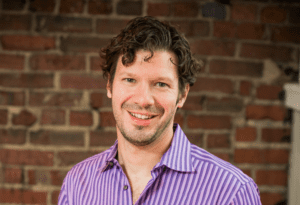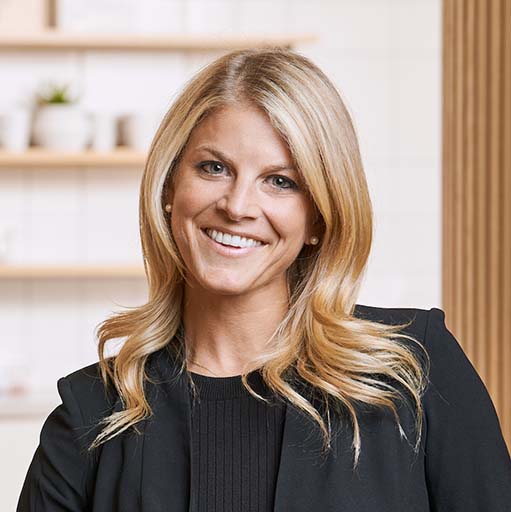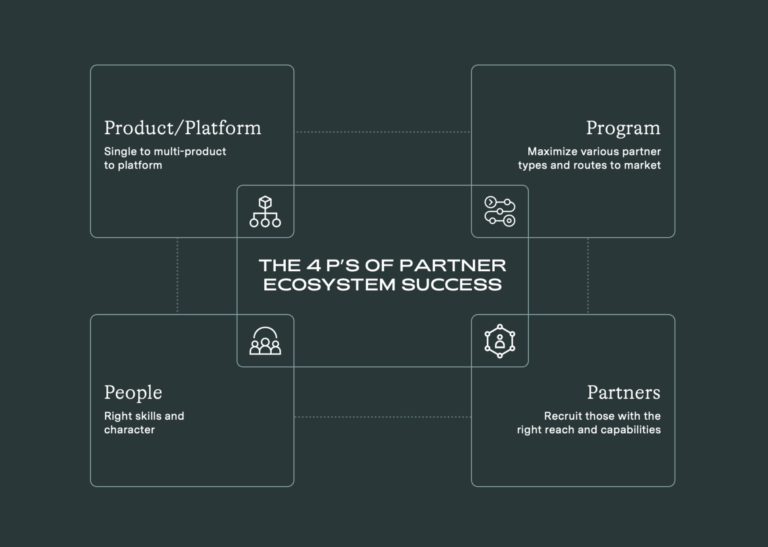Diversity, inclusion and equality is not only the right thing to do, but it drives real business results. Recent data shows that:
- Higher representation of women in C-suite level positions results in 34% greater returns to shareholders
- Organizations with above-average gender diversity and levels of employee engagement outperform companies with below-average diversity and engagement by 46% to 58%.
- Companies with higher-than-average diversity had 19% higher innovation revenues.
Driven by the recent and tragic news cycles over the past few months, there’s been a stronger focus for companies to get D&I right. While we all know there are clear benefits to achieving equality, it can be a challenge to attain parity. I recently spoke with CEOs and D&I leaders from three of our portfolio companies, Culture Amp, Outreach and Pendo, to hear about how they’ve incorporated D&I into their company culture, how they hold their leadership team accountable and how they measure success.
While the work is never done when it comes to diversity, here’s what Culture Amp’s Director of Equitable Design & Impact Aubrey Blanche, Outreach CEO Manny Medina and Pendo CEO Todd Olson had to share:
How is D&I incorporated in your company culture and strategy?

Culture Amp: We take our culture as seriously as we take business growth. In fact, that’s why the two strategies are held accountable at the company level. As a part of our culture strategy, we have gone beyond committing to diversity and inclusion programs by aiming to build a structurally equitable organization. This year, we are deeply focused on evolving as an anti-racist company. While we recognize that committing to progress is the first step in the journey, we have been careful not to replicate the pattern of promises without dedicated resources to achieve pledged outcomes.
To that end, we recently released our 2020 anti-racism plan, which looks at all areas of the business, including employee education, leadership accountability, knowledge management and all talent processes and programs. We hope that by sharing this plan publicly, we are able to continue to lead the industry and inspire our customers to build companies that are culture-first for everyone.
Outreach: We made diversity, equality and inclusivity a core value of Outreach from the very beginning. While we have several self-created groups within the company, we are in the process of building a more comprehensive program around these groups. One thing that I’m especially proud of is the fact that we work hard to give voices to others. We acknowledge and celebrate holidays from across many different cultures. For example, we made Juneteenth a company holiday. We’ve also conducted trainings on the inclusion of trans people. Right now, we are kicking off deeper D&I trainings across the company. This is a journey and we need to bring the whole company along.
As an immigrant to the U.S., I think it’s very important to create an environment where others like me can feel safe. Our hiring process never asks for anyone’s immigration status. If you get a job at Outreach and need a visa, that will never disqualify you. And we will do what it takes to make sure you can legally work in the U.S. We also offer benefits around helping people get green cards or citizenship. The concept of creating a safe space is what really drives our culture.
Pendo: I’m proud to say that Pendo’s culture is open and transparent. Transparency is easy when everything’s running smoothly. But when there’s a foundational quake, like we’ve seen throughout society in recent months, organizations can retreat to a protective mindset. Pendo didn’t. In fact, we turned to the principles that underpin the organization and leaned on them for direction. “Show me the data” is a tenet. So we shared our D&I data and publicly committed to improve. “Brutal honesty” is another value. Leadership was honest with itself–we needed to self-educate, so we brought in prominent members of our community, namely the mayor and a former state supreme court justice, to deepen our relationship with civic leaders.
We also turned inward and leaned on the Pendo team for guidance, in particular or employee-led affinity groups. These groups helped highlight areas for improvement that we might not have fully recognized without the input from a diverse group of Pendozers.
What’s the role of the leadership team in leading by example and driving change when it comes to D&I?
Culture Amp: CEO and leadership buy-in is critical, but insufficient to drive progress. Leaders must also be accountable and transparent in their work, specifically to the underrepresented people D&I and/or equitable design programs are designed to support. We consider this non-negotiable, and are proud that as a part of our commitment to evolving as an anti-racist organization, we are requiring all of our leaders, Director level and above, to establish their own anti-racism education goals, and our metric of success considers only the experience and input of our black employees.

Outreach: I believe D&I starts at the top. You can see at the board level and at the leadership level, we have a gender and racially diverse group of people. Three out of four of my direct reports are women and 40 percent of our company’s leadership are women. Representation is hugely important. Employees need to see themselves reflected in their leadership. We are doing everything we can to make sure we create a diverse team–starting with our exec team down.
Pendo: We have a very passionate, community-minded team at Pendo, making this such a compelling company to be part of. But at some point, what leadership says needs to give way to what leadership does.
I mean this part broadly–it relates to Pendo certainly, but it’s bigger than any organization. When it comes to driving change, part of what you do is binary. For example, you increase diversity numbers throughout the organization or you don’t. Those metrics largely speak for themselves. But some of what you do is more subtle. Perhaps there are behaviors that you may have once tolerated, that now you don’t. Acting more decisively, self-educating, being vulnerable–these are some of the ways leaders lead by example.
I don’t believe the team expects leadership to have all of the answers. But leading by example requires executives to ask better questions and, critically, persist in championing the importance of D&I, especially when the media has shifted its focus to other stories.
What processes and tools are required to drive cultural change?
Culture Amp: In order to drive progress, companies need a variety of tools to:
- Measure the current environment and future progress
- Transparently track goals and metrics associated with all D&I and equitable design programs
- Capture feedback and performance that minimize the potential application of human bias
Culture Amp leverages its own products to achieve these goals. We rely on our Engagement platform to measure the experience of Campers from all backgrounds, and track changes in the experience over time. Our platform also allows our managers to understand the most important areas of strength and opportunity within their teams and departments, and provides inspiration to take action based on the results. Our Performance platform provides us with a way to be truly transparent with our employees and accountable to driving real results, using our goals tools. Our Performance product has also been shown to reduce gender-based bias in feedback, and helps us ensure that all of our employees are evaluated fairly–far more effectively than any training might accomplish.
Outreach: A lot of people use culture as a way to create uniformity within an organization. But culture is ever-evolving–it doesn’t stay the same as you grow and add new people. It’s like making soup –each new person brings their own flavor into the mix. Your organization has to embrace diversity, inclusion and equality in order to evolve your flavor, or culture.
The key is creating an environment that allows for open and safe communication. I try to be as open and transparent as I can be with the entire company so everyone knows it’s encouraged to have that type of dialogue with each other. People need to feel safe that they can voice their opinion when something isn’t working or highlight areas we could be doing better.

Pendo: Some of the tools we lean on are Slack for our affinity group discussions, as well as 15Five and Looker for transparency in the way we manage the organization. We also have bi-weekly Town Hall meetings in which the C-team answers anonymous questions submitted by the team. Ultimately, D&I change hinges on a cultural change, and leadership is responsible for establishing the cultural norms. D&I progress and cultural progress are intertwined. So tools and processes that help sow the seeds of culture, are the same tools and processes that help make the workplace more diverse and inclusive.
What does success look like when it comes to D&I?
Culture Amp: Ultimately, there is no “end game” with D&I. We are always learning new ways to consider how to build a better workplace for everyone. That said, there are some useful benchmarks to consider. For representation (what we call “diversity”), companies should look to ensure that their offices reflect the communities in which they reside. In terms of equitable experiences (both inclusion and broader experiences), companies should look to see that no groups have a significantly different experience (often this means bringing them to parity with majority or over-represented groups).
Outreach: The first step is figuring out exactly what you want to measure. Setting the goals too early may lead to the wrong results. It’s better to declare a general intent and make it achievable. For instance, we want to increase the percentage of black people in the funnel and then we can measure the number of black people we hire. Then, you can work as a team to come with new ways to increase that number. You have to inspire people to go on the journey with you.
Tracking is harder without the mechanisms to move the needle. We let our team create internal affinity groups and come up with ideas about how to attract more of their groups–be it LGBTQ, people of color, Latinx, etc. Then, we put those ideas into our recruiting efforts, see what works and make it a formal process.
Pendo: The box is never checked. You’re never “D&I Certified.” There’s no Good Housekeeping Seal of Approval here. Success is a dynamic, self-adjusting culture that constantly demands the organization to improve by challenging assumptions and jarring leadership out of cultural complacency. Progress can be observed in the evolving composition of our workforce. It looks like a more diverse leadership team. It’s building a future generation of Pendozers from candidate pools that we haven’t historically recruited from. Progress can also be seen in changes in employee Net Promoter Scores–both broadly throughout the organization, as well as scores among our underrepresented minority teammates. It looks like an office design that takes into account the needs and gifts of neurodiverse colleagues. It’s also a recognition that the more successful the business is, the more weight our voice will carry in our community.




